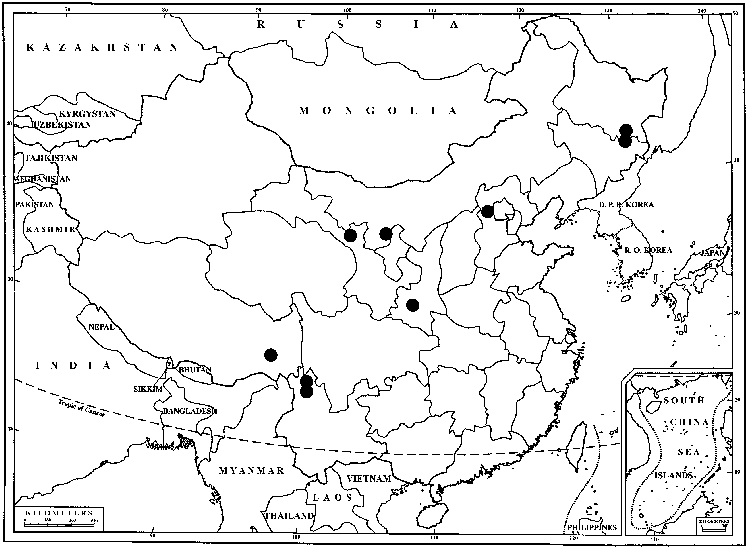Didymodon asperifolius
Bryologist 67: 163. 1964,.
Plants orange-green or redbrown, occasionally blackish. Stems to 3 cm, central strand weak or absent. Stem-leaves appressed-incurved when dry, usually strongly recurved and keeled when moist, monomorphic, triangular to lanceolate, adaxially grooved along costa, 1.2–2.5 mm, base ovate, margins strongly and broadly recurved in proximal 1/2 or up to near apex, entire, apex narrowly to broadly acute, not fragile, commonly ending in a conical cell; costa percurrent or ending 1–4 cells before the apex, tapering, widened pad of cells absent, adaxial costal cells quadrate to shortrectangular, 4–6 cells wide at mid leaf, guide cells in 1 layer; basal laminal cells differentiated medially or across leaf, rectangular, walls usually thickened; distal laminal cells 13–15 µm wide, 1: 1, papillae usually absent, rarely simple, weak and domelike, 1 per lumen, lumens rounded or angular, walls thickened, often irregular or very weakly trigonous, weakly to strongly convex on both sides, 1-stratose. Specialized asexual reproduction specialized structures absent. Seta 0.4–0.6 cm. Capsule ca. 1 mm; peristome teeth 16, short-lanceolate to linear, irregularly cleft or perforate to near base, straight, to 50–300 µm. Spores 13–15 µm. Distal laminal KOH reaction red.
Phenology: Capsule maturity undetermined.
Habitat: Calcareous or acid rock, moist calcareous soil, peatland, streamside, alpine
Elevation: moderate to high elevations (500-3700 m)
Distribution

Greenland, Alta., B.C., Nfld. and Labr. (Labr.), N.W.T., Nunavut, Yukon, Alaska, Colo., Europe, Asia
Discussion
Didymodon asperifolius can sometimes be immediately recognized by a red-yellow translucency in leaves of dry plants, like oiled paper. The adaxial surface of the costa may have either quadrate or short-rectangular cells. The distal laminal cells are also rather large for the genus. The KOH reaction, as well as the natural color of the lamina are sometimes light orange, but usually quite red. Some plants may appear green but the laminal cell walls are red under high magnification.
Selected References
None.
Lower Taxa
"um" is not declared as a valid unit of measurement for this property."um" is not declared as a valid unit of measurement for this property.